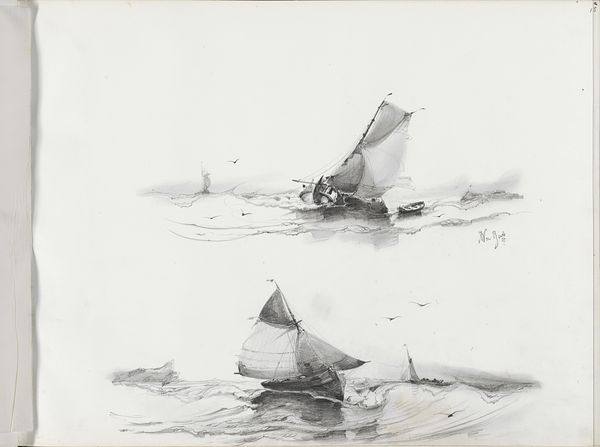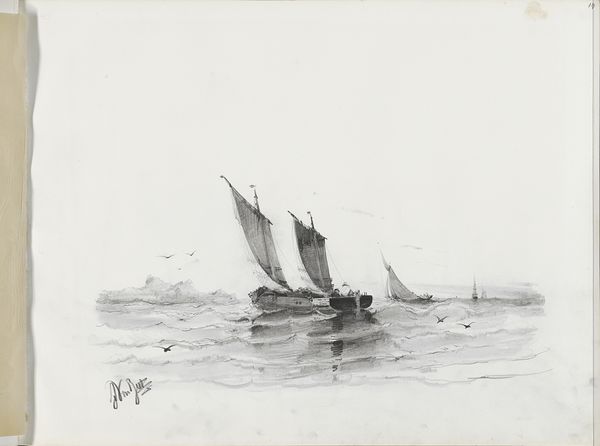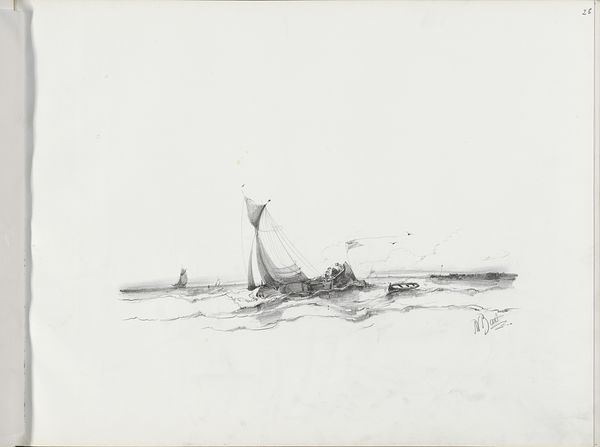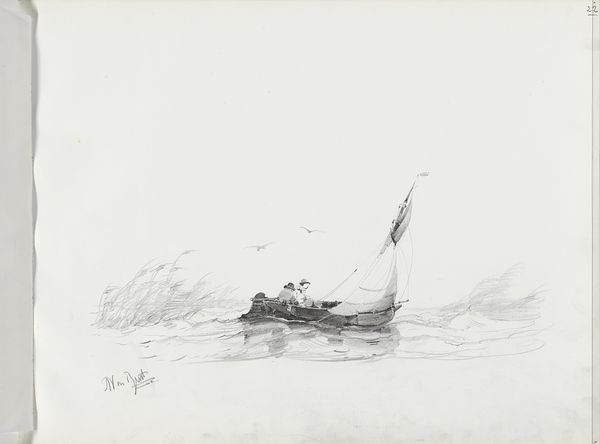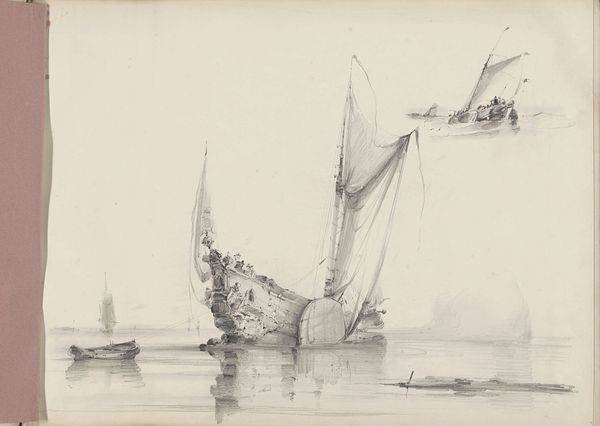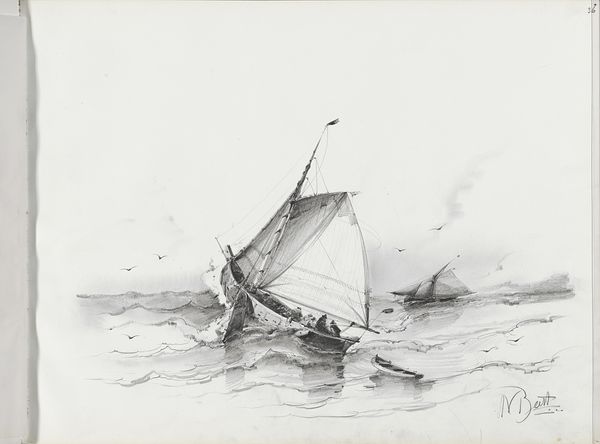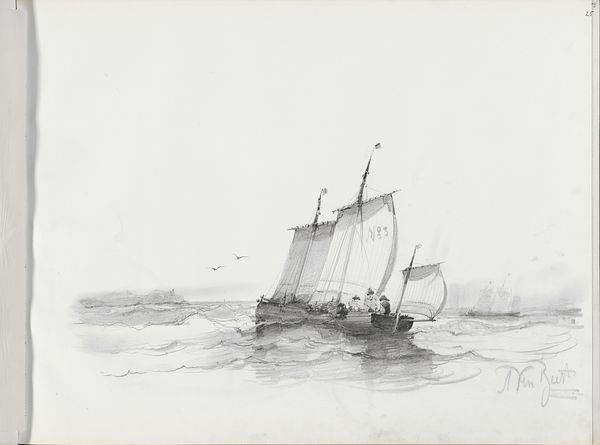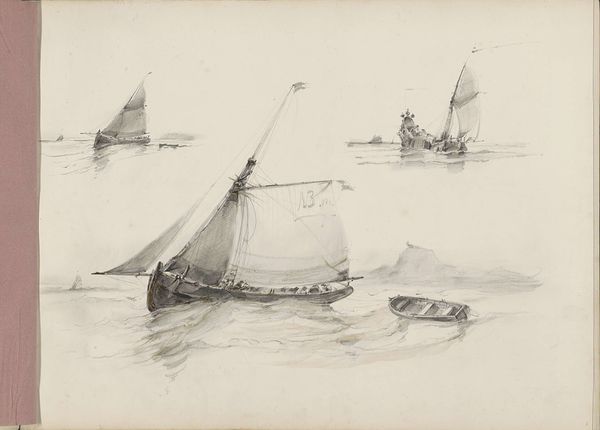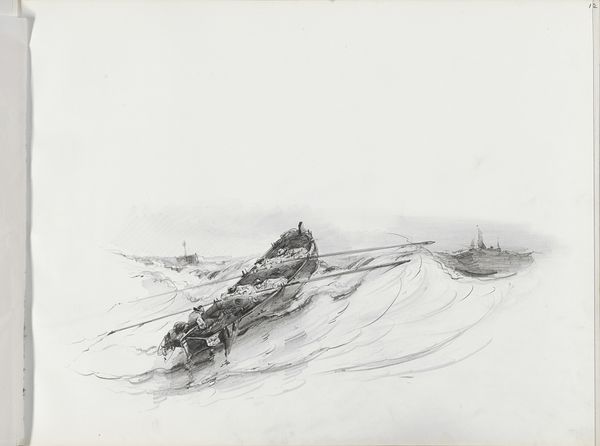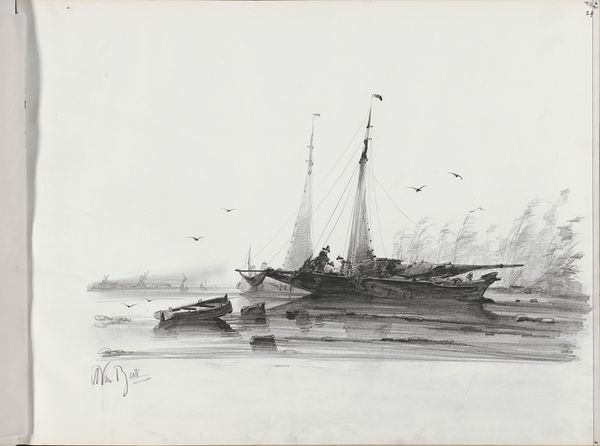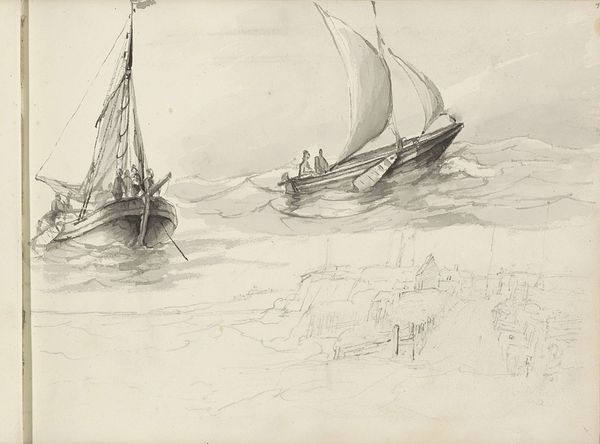
drawing, pencil
#
drawing
#
pencil sketch
#
landscape
#
romanticism
#
pencil
Copyright: Rijks Museum: Open Domain
Curator: This pencil drawing, currently residing at the Rijksmuseum, is titled "Reddingssloep met figuren bij een scheepswrak," or "Lifeboat with Figures by a Shipwreck," and it was created sometime between 1830 and 1860 by Albertus van Beest. Editor: My immediate impression is one of profound unease. The turbulent sea, rendered in stark pencil strokes, suggests vulnerability and the precariousness of human existence against the relentless power of nature. Curator: Indeed. Van Beest was known for his marine paintings, and this drawing reflects the Romantic era’s fascination with nature's sublimity. I think we need to consider the role of shipwrecks within this cultural context; beyond a mere record of events, wrecks also become poignant markers of maritime cultures and the loss of countless souls over centuries. It reflects on the legacy of trade and colonialism that shaped societies. Editor: Looking at the lifeboat specifically, it's rendered with a fragile hope. Notice how Van Beest places it between the shipwreck and other ships farther in the distance? As a potent symbol for a visual vocabulary related to rescue at sea, it speaks of faith in times of disaster and connects to deeply-rooted cultural ideas and ideals of divine intercession and assistance for victims. Curator: I appreciate your highlighting the visual metaphor of the lifeboat as faith. Given the period in which this was created, this piece might also have broader implications related to the intersection of gender and disaster; the survivors would inevitably be impacted differently along gender lines. The lack of visual cues of the survivors complicates the situation even more and adds layers of tension. Editor: It also reminds us of our collective memory connected to survival and the way communities mobilize themselves during catastrophe to come to one another’s rescue. If you follow the lines of the hull on the capsized vessel, a diagonal appears and takes us into the lifeboat and other ships to show how, visually and symbolically, one affects the other, thus carrying a profound human drama and creating its long shadow. Curator: A poignant reminder that visual symbols carry layered emotional, psychological and cultural weight across the decades, connecting individual experiences with the vast and often tragic, narratives of maritime history and its complex impact on identities across time and cultures. Editor: I concur. I am deeply struck by the emotive power in these simple marks. They truly offer an important commentary.
Comments
No comments
Be the first to comment and join the conversation on the ultimate creative platform.
